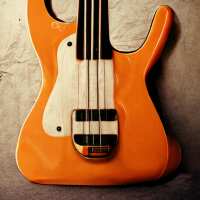Loopy Pro: Create music, your way.
What is Loopy Pro? — Loopy Pro is a powerful, flexible, and intuitive live looper, sampler, clip launcher and DAW for iPhone and iPad. At its core, it allows you to record and layer sounds in real-time to create complex musical arrangements. But it doesn’t stop there—Loopy Pro offers advanced tools to customize your workflow, build dynamic performance setups, and create a seamless connection between instruments, effects, and external gear.
Use it for live looping, sequencing, arranging, mixing, and much more. Whether you're a live performer, a producer, or just experimenting with sound, Loopy Pro helps you take control of your creative process.
Download on the App StoreLoopy Pro is your all-in-one musical toolkit. Try it for free today.
Live Rig Volume
Hi all, I more and more use my iPad for rehearsals but would also want to use it live on stage. I use iMIDI Patchbay and it works absolutely great. However, I have more and more soft syths running in the background and switch between them and different programs for sounds. I have difficulties to adjust the volumes between all synths and programs. I would want to switch to any sound and have the same output volume all the time and only finetune the sum output volume. Is there any virtual 'meter' or measure procedure to measure output volumes to be able to level all volumes? How do you do this? Thanks, Doc_T



Comments
If you use AUM, you have a convenient mixing board with level meters. If you have a problem with volume disparities between presets, you probably should consider tweaking the presets or making tweaked copies so that you don't need to make significant volume adjustments for individual presets on stage.
Balancing volumes for a set’s worth of different keyboards is a common problem. As a sound man, I see bands that their keyboard sound volumes are all over the place, and they are having to mess with their volume every song, and so am I.
I don’t think measuring the level with a regular dB meter would be very helpful, as some sounds will have louder sounding tones, without necessarily having a higher output on the dB meter. Trebly sounds will sound louder than a muffled, bassy sound, when they both hit the same on the meter. Also sounds with quick transients will meter higher, than organ-like sustained tones.
I usually pick a sound, as the reference, and then go through the sounds in the set, and adjust their individual volumes to the reference. From there, just play the set, and DON’T touch the master volume, even if something is screaming loud- do all of your volume adjustments PER PATCH, and save them immediately before you do the next song. Play each song a couple times in a row, until the volume is right, without you touching the master. You are mixing your set. The goal is that you be able to to play your set without touching the master, and without the sound man riding the level. It makes performing much easier, that you have the confidence that when you hit the first note of each song, that it’s going to sound right.
Your reference shouldn’t be pegged at 0dB on your meter, you don’t want to be adjusting all of your sounds too hot, or you will run out of headroom, and not be able to get certain sounds loud enough without clipping. You’ll have to go through and make all of the other sounds quieter, to match that one you couldn’t get loud enough. Some synths and drum machines are really hot, in iOS, this isn’t a good thing, when you are using a bunch of apps together. Best to turn those down, rather than trying to get everything to be as hot. I think it is best to leave 6dB, or even 10dB, of headroom, internally in your mixer (AUM) and interface output, and turn up the amp/PA speaker. There is no penalty for being a little quiet, internally.